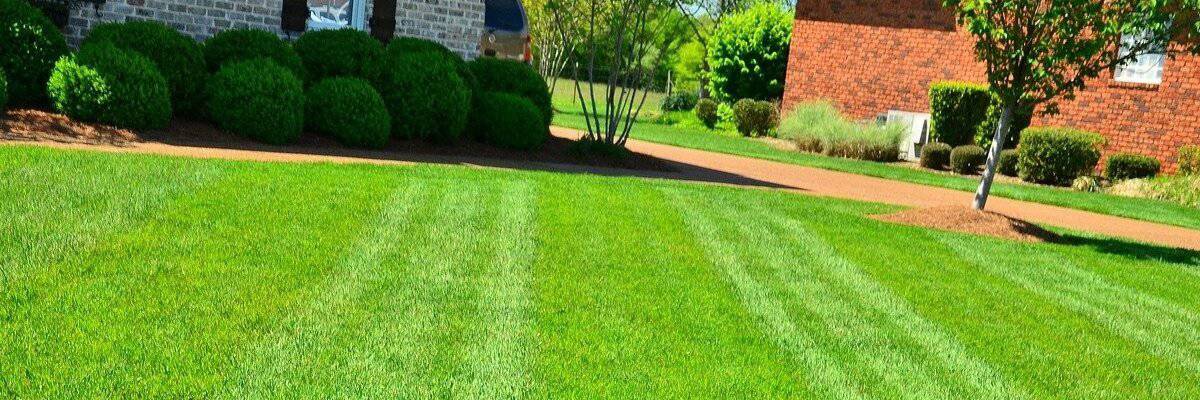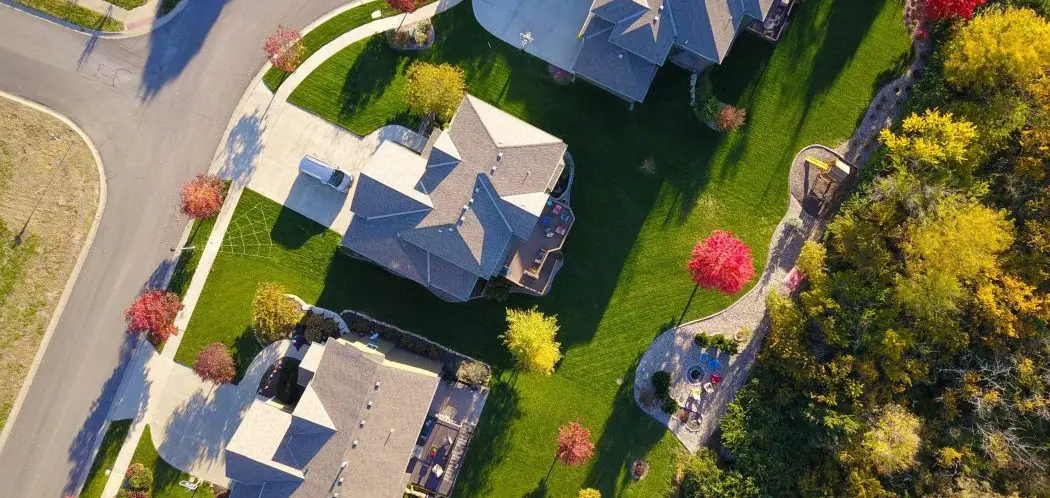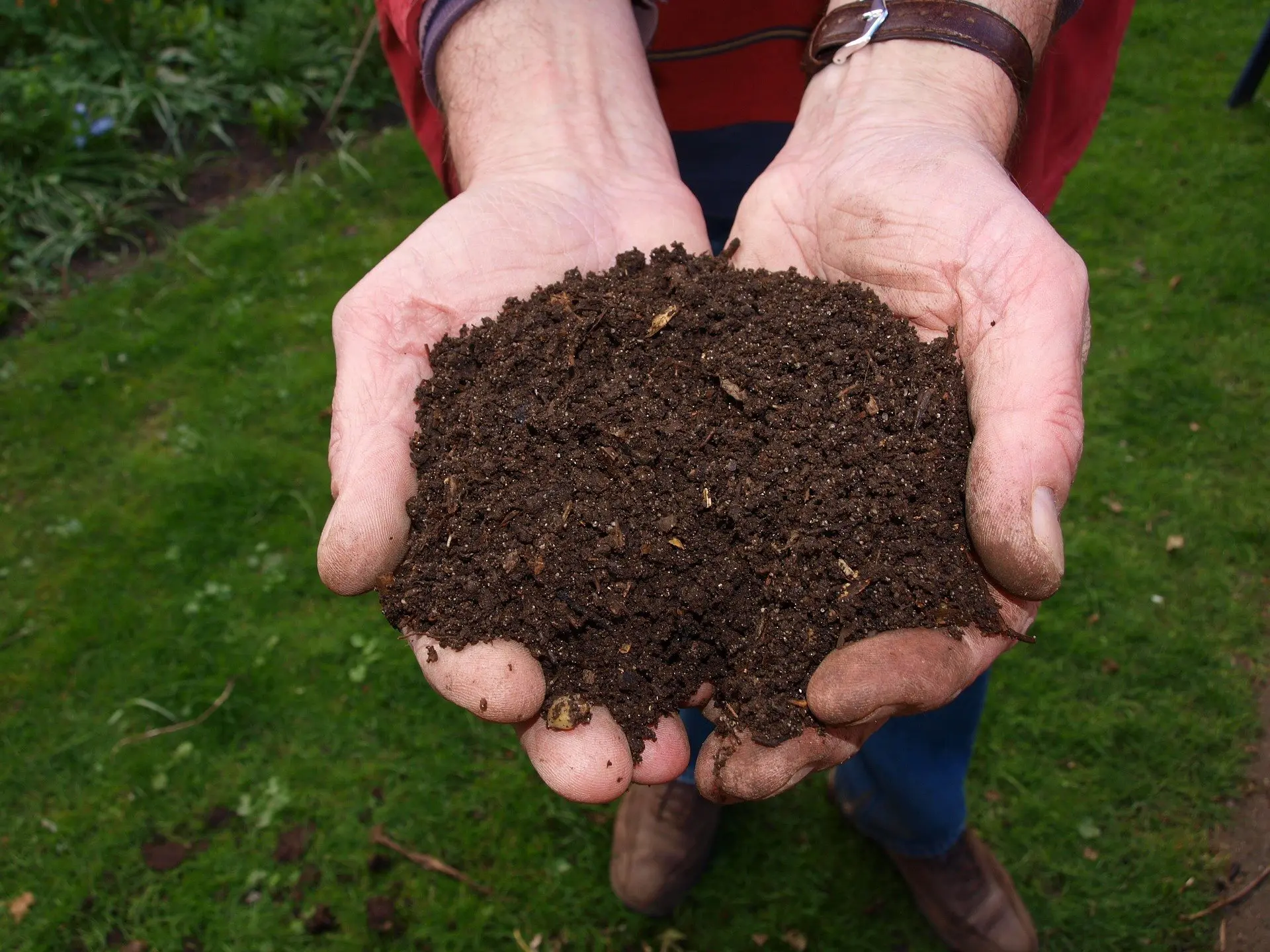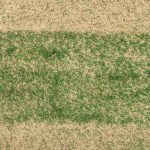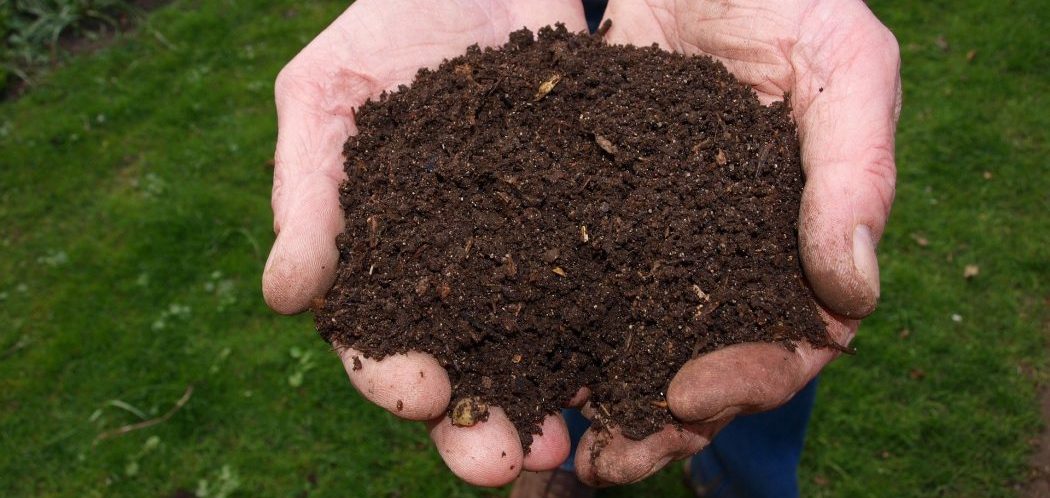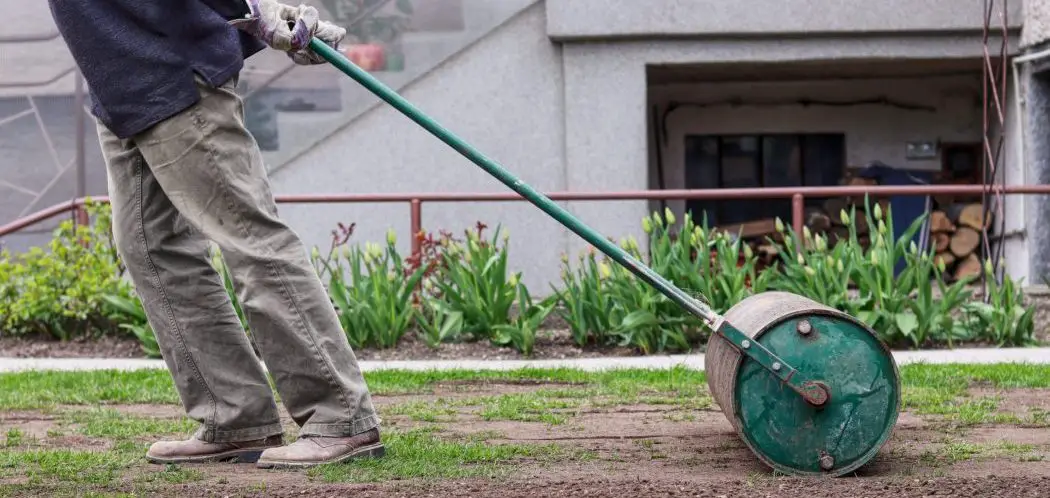Keeping your lawn smooth and even is one of the keys to having a great looking landscape. But how often should you level or re-grade your lawn area? There’s no one-size-fits-all answer, as the ideal frequency depends on several factors. Read on as we discuss the ins and outs of proper lawn leveling.
You should level your lawn as needed, typically every 1-3 years, depending on the extent of unevenness and wear.
The Importance of Regular Lawn Leveling
Having a level, smooth lawn provides aesthetic appeal and makes mowing easier. Over time, lawns can become bumpy and uneven due to things like soil settling, pet activity, mole tunnels, and more. When the ground is uneven, it creates an irregular mowing surface. This can lead to an inconsistent grass length and scalping in certain areas. Leveling fills in low spots and smooths out high spots for an even canvas.
Proper grading also improves drainage during rains. Avoiding low areas where water pools reduces the chance of fungi and disease. In addition, level lawns allow for more uniform irrigation coverage. The lawn will get watered evenly, without dry patches or oversaturation.
So while keeping a perfect lawn grade may seem meticulous, it offers practical benefits. Put in the periodic work to level your lawn and you’ll be rewarded with good looks and health.
Factors That Affect Frequency
When determining how often your specific lawn needs leveling, there are several characteristics and usage factors that impact the ideal frequency:
- Grass type – Warm season grasses such as bermuda and zoysia thrive during hot weather and spread aggressively via above ground stolons and rhizomes during the growing season. This rapid summer growth results in more pronounced ridges, grains, and general unevenness over a single season compared to slower growing cool season grasses. Lawns with these varieties tend to require annual leveling.
- Soil composition – Lawns established on loose, sandy soils or those with minimal clay content are more susceptible to shifting, settling, and eroding over time. This gradual soil movement leads to unevenness forming quickly. Tighter clay soils offer greater stability and structure, reducing sinking and bumps. Evaluate your native soil’s density and water retention traits. Looser soils mean more frequent leveling needs.
- Shade coverage – Areas of lawn growing in heavy shade are slower to dry out after rain and irrigation. Excess moisture keeps soil softer and more prone to compaction and footprinting. In addition, reduced sunlight slows growth, limiting the grass’s natural ability to self-fill small dips. Increase leveling frequency if large portions of the lawn are shaded.
- High traffic zones – Any regions that receive concentrated foot traffic, play activity, sports use, or heavy mower turning will show unevenness faster. Prioritize inspecting and leveling these high wear areas at least annually to smooth out soil compaction and disruption.
- Pet presence – Lots of digging, tunnels, urine spots, and pathways from dog or other pet activity takes a toll on lawn smoothness. Monitor zones your pets frequent for sunken areas or raised digging piles needing prompt attention.
- Degree of slope – Lawn areas with noticeable side or front to back slope are at increased risk of erosion and runoff during rains. This settling effect is amplified on steeper inclines. Check sloped sections more often for low spots.
- Overseeding routines – While beneficial, working seed into the soil and topdressing introduces movement that can contribute to bumps over multiple seasons. Account for this when timing leveling.
Knowing the factors that accelerate unevenness for your lawn allows customizing leveling frequency accordingly. Prioritize problem areas while maintaining smoothness vigilantly.
Seasonal Timing for Lawn Leveling
When it comes to the best time to level your lawn, timing matters. While it can technically be done any time the ground is workable, certain periods are better than others.
Spring and fall are ideal times to level cool season grasses like fescue and bluegrass. The soil is moist enough for grading work, and grass plants are actively growing to fill in any thin spots. Avoid summer leveling of cool season lawns, as heat stress can hinder grass regrowth.
For warm season grasses like bermuda, the optimal leveling window is early to mid summer. This lines up with the active growing season. Dormant warm season grasses can also be leveled over winter in warmer climates.
No matter the grass type, allow 4-6 weeks post-leveling for complete filling in of any bare areas. Time it right before a growth spurt. And be sure to continue regular watering and mowing during the grow-in period.
Signs Your Lawn Needs Leveling
Don’t wait until major dips or bumps have developed to level your lawn. It’s best to address subtle signs of unevenness early before they worsen. Watch for these indicators that it’s time to smooth and re-grade:
- Uneven grass height – After mowing, take note of areas that seem significantly shorter or longer than the desired height. This shows the mower cutting inconsistently due to an uneven surface.
- Scalping – Look for regions of the lawn where mower blades seem to be removing too much leaf tissue from grass blades, leaving them stubby. This happens when blades catch high spots, exposing lower blade height to surrounding areas.
- Standing water – After rain or irrigation, monitor anywhere that remains soggy or holds puddles longer than the rest of the lawn. Depressions that collect water can lead to fungus and disease.
- Mower rutting – Over time, mower wheels can create permanent dents and grooves in the lawn’s surface. They show up as long straight linesIndentations. Fill them promptly to limit further damage.
- Visible bumps or ridges – Carefully inspect the lawn from multiple angles to spot any slightly raised bumps or ridges starting to form. Also look for visible depressions or holes.
By taking action at the first signs of unevenness, you can smooth the lawn before problems compound. Allowing low areas to worsen exposes grass roots and leads to decline. And major high spots become increasingly hard to remedy.
Make it part of your routine care to regularly check for subtle grade issues, especially in high traffic zones. Fixing slight imperfections promptly saves you significant time and turf damage down the road.
Long-Term vs. Short-Term Solutions
When faced with an unlevel lawn, you have the choice between quick fixes that provide immediate improvement and more intensive solutions that address underlying causes for longer-lasting results. Understanding the pros and cons of each approach can help determine the right leveling methods for your specific needs.
Short-Term Leveling Options
These simpler, temporary methods offer a fast way to smooth things out, but don’t fix the root of the problem:
- Rolling – Using a water-filled lawn roller is a popular pre-mowing technique to flatten down high spots and smooth the cutting surface. However, the effects are extremely short-lived, only lasting until the soil naturally shifts again. Rolling alone does not fill in low areas. It is best used as a supplemental approach when other leveling work is also planned.
- Raking and filling – For mild bumps or dips, raking high areas to collect soil and redistribute it into adjoining low spots can provide quick improvement. However, lawn soil is continually settling, eroding, and moving over time. Any results from raking and filling are temporary as unevenness will eventually reform.
- Topdressing – Adding a very thin layer of topsoil or sand can help blend out minor highs and lows for improved smoothness. Topdressing alone does not fix deeper depressions or more prominent ridges. And it may not match existing soil structure. Use it sparingly as a maintenance approach for already well-graded areas.

Long-Term Leveling Solutions
These more intensive methods aim to permanently correct the underlying causes of lawn unevenness:
- Core aeration – If soil compaction is causing areas to sink, core aerating is key for long-term improvement. Pulling plugs of soil reduces compaction and improves air, water and nutrient circulation at the roots. Do this at least annually along with overseeding for steady enhancement of soil structure. Preventing compaction also minimizes sinking and low spots.
- Underground barrier – Installing plastic, metal or concrete lawn edging strips around high traffic areas and property perimeters prevents soil movement, erosion, and settling long-term. This keeps the edges neat and prevents gradual encroachment of unevenness from adjacent properties or structures.
- Major re-grading – For lawns with significant unevenness, major grading work may be required to fully smooth and properly re-establish the slope and drainage plane for lasting results. This may involve renting equipment, soil removal or addition, laser grading tools, and professional expertise. But it can entirely transform problem areas.
To make the best choice for your situation, evaluate the severity of unevenness, your lawn’s specific needs, and the required timeframe for improvement. In many cases, blending short-term and long-term techniques offers the ideal combo for both immediate enhancement and lasting results.
Preventive Measures to Reduce Leveling Frequency
While some lawn unevenness is inevitable, you can take steps to minimize problems. Good lawn care and preventive practices mean less leveling down the road. Here are some tips:
- Improve drainage of any chronically wet areas
- Address soil compaction right away
- Overseed thin spots to limit further erosion
- Install underground lawn edging around high traffic zones
- Use organic fertilizer to build soil microbial life
- Adjust watering routines to provide uniform coverage
- Re-route walking paths away from grass areas
- Fill in tunnels or holes from pets or wildlife ASAP
Take time to understand what factors cause your lawn to become unlevel. Preventive care tailored to those issues reduces how often major leveling is needed.
Professional vs. DIY Leveling: What’s Right for You?
Lawn leveling falls into the category of DIY-friendly work, but pros can also get the job done. Consider these factors when deciding which route to take:
DIY Leveling
- Saves on project costs, if you already own basic tools
- Allows you to work at your own pace
- Gives you full control of the process
- Best for smaller lawns or minor re-grading needs
Professional Leveling
- Experienced with efficient leveling techniques and best practices
- Access to commercial-grade equipment for larger jobs
- Ability to identify and address underlying issues
- Better suited for major grading work or expansive lawns
- Saves time and physical effort on your end
Evaluate your specific lawn’s needs and your own skill level. For many homeowners, periodic DIY leveling maintains adequate smoothness. But over time, calling in a pro provides a more thorough approach.
Effects of Over-Leveling: Finding the Balance
It’s possible to go overboard with leveling efforts, especially on grass varieties prone to developing bumps like bermuda. This risks unintended consequences. How do you know if you are leveling too much? Watch for these signs:
- Thinning grass – Repeated disruptions to the soil and root zone from excessive leveling work can stress the grass. This causes thinning and bare patches as the turf struggles to continually re-establish.
- Loss of soil health – Too much soil amendment or removal depletes the natural organic matter, beneficial microbes, and nutrients that support strong grass growth. It harms soil composition.
- Drainage issues – Adding too much sand to increase smoothness can hamper drainage and water penetration in naturally dense soils. Or removing too much heavy soil can reduce water retention in sandy lawns.
- Compaction – Heavy equipment used excessively for frequent grading work can overly compact the underlying soil. This worsens bumps and sinking.
- Wasted time/money – Obsessively leveling every tiny ridge that appears wastes effort and money better directed toward proper care. Prioritize major issues.
The key is to take a minimally invasive approach focused on maintaining adequate smoothness without overdoing soil disruption. Seek gradual improvement vs. attacking every minor flaw. Allow full grass recovery between sessions. And supplement leveling with core aeration, organic fertilization, overseeding and drainage fixes for sustained results.
Setting a Leveling Schedule
Determining the ideal lawn leveling frequency depends on several factors:
- New sod or seeded lawns – New grass lawns are very vulnerable in their first year of establishment. Expect more settling as sod roots take hold or grass fills in from seed. Plan to level and roll the lawn 2-3 weeks after initial installation. Then monitor closely for low or high areas and re-level as needed for the remainder of the first growing season.
- Established cool season grasses – Mature lawns of fescue, bluegrass, ryegrass and other cool season varieties tend to require leveling every 2-5 years in general. But keep an eye out for bumps or unevenness forming sooner, and re-level on an as-needed basis. Signs to watch for include scalping, mower ruts, and standing water.
- High traffic areas in cool season lawns – High use zones such as play areas, sports fields, and pathways are subject to more compaction and soil disruption. Target these regions for annual leveling to keep them smooth despite heavy wear.
- Bermuda and zoysia lawns – These warm season grasses thrive during summer and are prone to developing ridges, grain, and unevenness during rapid growth. Level them at least once per year before peak growing season to restore an even surface.
- Sloped or eroded areas – Sections of the lawn with noticeable slope are at increased risk of runoff erosion and settling. Steep front or side yards may need leveling 1-2 times per year to limit erosion.
- Proactive minor leveling – As a preventive measure, make it a routine to spot-check for developing dips or bumps 2-4 times during the growing season. Quickly filling small uneven areas as they appear prevents bigger issues later.
Customize the schedule and frequency based on your specific lawn traits, trouble spots, grass variety, and routine care practices. Staying consistently on top of leveling needs maintains health and beauty for the long run. Also budget periodic professional help for major grading projects, drainage correction, re-establishing slopes, and compaction relief beyond DIY capabilities.
Conclusion: Maintaining a Beautiful, Healthy Lawn
Lawn leveling is one of those yard care tasks that gets overlooked at times, until lack of attention catches up with you. But making smoothness maintenance a regular routine prevents major headaches down the road. Get on a proactive leveling schedule tailored to your specific lawn. Provide the preventive care needed based on your grass type, usage, soil, and other traits.
Stay alert for early warning signs that the grade needs attention – before it turns into a visible eyesore or hazard. And don’t be afraid to hire a professional landscaper periodically to tackle underlying problems that your standard equipment can’t fix. Like all lawn care, the key is consistency. Make lawn leveling part of your regular upkeep routine and you’ll be rewarded with lasting beauty and health.

